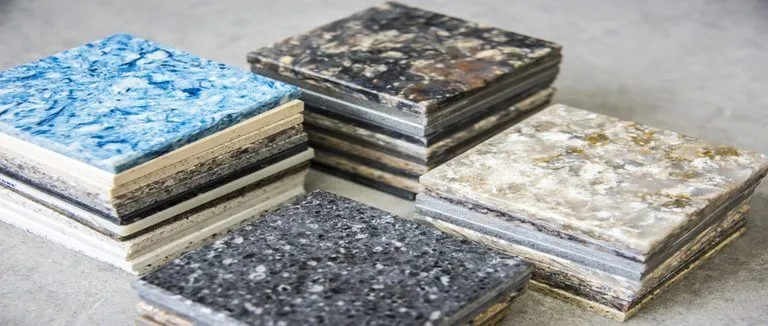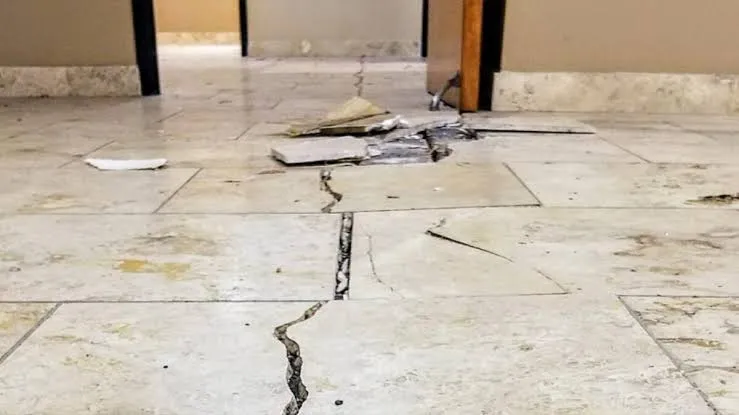Many homeowners and designers are drawn to the elegance and sophistication that marble brings to any space. From pristine marble kitchens to breathtaking marble floors, it is easy to see why this material has been used for centuries in architectural design. However, a common question that arises when considering marble as a material is: Does marble crack easily? Understanding the characteristics of marble and how to properly care for it can help answer this question and ensure that your investment in this beautiful stone remains intact.
Understanding Marble as a Material
Marble is a beautiful and timeless material that has been used in architecture and design for centuries. It is a metamorphic rock that is formed over time from limestone subjected to intense heat and pressure. This process creates the characteristic swirls and veins that make each slab of marble unique.
Marble is made up primarily of calcium carbonate, which gives it its signature white or light-colored appearance. While this composition makes it a popular choice for countertops, flooring, and other decorative applications, it also makes it vulnerable to scratching and etching. With correct installation and maintenance, however, marble can last for generations.
Formation and Composition of Marble
The process of creating marble involves a long period of intense heat and pressure. This results in a rock that is dense and hard, with high levels of calcium carbonate. The calcium carbonate content makes marble susceptible to etching, as acidic substances can react with the calcium and dissolve the surface layer of the stone. In addition, marble's crystalline structure makes it vulnerable to stress and impact that can cause cracking. Despite these vulnerabilities, marble remains a popular choice for high-end design projects due to its unique beauty and durability when properly cared for.
Types of Marble and Their Characteristics
Marble comes in a variety of colors and patterns, each with its own unique characteristics. Some marbles are more porous and softer, while others are denser and harder. The type of marble used in a space can impact its durability and overall suitability for the application.
For example, Carrara marble is a type of marble that is known for its elegance and beauty. It is a popular choice for bathroom countertops, flooring, and backsplashes. However, it is also softer and more susceptible to damage than other types of marble.
Calacatta marble, on the other hand, is a denser and harder type of marble that is less porous and more resistant to damage. It is often used in high-traffic areas such as commercial buildings and hotels.
Other types of marble include Statuario, which is prized for its pure white color and dramatic veining, and Emperador, which has a rich, warm tone and unique striations. When selecting marble for a project, it's important to consider the characteristics of each type and how they will impact the durability and overall aesthetic of the space.
Factors Affecting Marble's Durability
Several factors can impact the durability of marble, including the thickness and quality of the marble slabs, environmental factors, and installation and maintenance practices.
Thickness and Quality of Marble Slabs
The thickness and quality of marble slabs can impact its ability to withstand stress and impact. Opting for thicker slabs can help reduce the risk of cracking and ensure that the marble can withstand the demands of the application. Likewise, selecting high-quality marble that is free from defects can help ensure its durability.
Environmental Factors and Temperature Changes
Environmental factors such as temperature changes and humidity can impact marble's durability. Excessive heat or cold can cause marble to expand or contract, which can lead to cracks. It is essential to maintain a consistent temperature in spaces outfitted with marble to prevent this kind of damage from occurring.
Installation and Maintenance Practices
Proper installation and maintenance practices are critical to ensuring the durability of marble. Installation must be done correctly and with adequate support to prevent the marble from cracking under the weight of heavy objects. Likewise, regular care and maintenance can help prevent etching and other damage from occurring.
Common Causes of Marble Cracking
While marble is a durable and long-lasting material, there are still several common causes of cracking to keep in mind.
Impact and Pressure
Marble is not immune to impact and pressure, which can cause it to crack. Heavy objects dropped on a marble countertop, for example, can easily cause a crack if the marble is not adequately supported.
Natural Stone Veining
The natural veining in marble can sometimes lead to cracking, as these veins create weaker points in the stone that are more vulnerable to stress and impact. Hairline cracks may begin to develop along these veins over time.
Improper Installation or Support
Improper installation practices, such as failing to use enough adhesive or providing inadequate support, can cause marble to crack under the weight of heavy objects.
Preventing and Repairing Marble Cracks
Choosing the right kind of marble and following proper installation and maintenance practices can help prevent cracks from forming in your marble. However, if a crack does occur, several repair options are available.
Choosing the Right Marble for Your Project
Choosing a high-quality, dense type of marble can help reduce the risk of cracking. Marble with a uniform appearance is also less likely to have weak points that can create fissures and cracks.
Proper Installation Techniques
Ensuring that marble is properly installed with enough adhesive and support can help prevent cracks from developing over time.
Maintenance and Care Tips
Regular maintenance and care can help prolong the life of marble and prevent cracks from forming. It is essential to use only pH-neutral cleaners and avoid using abrasive substances that can scratch the surface of the marble. Regular sealing can help protect the surface of the marble from staining and other damage, as well as prevent moisture from seeping into the stone and causing cracks.
Repair Options for Cracked Marble
If a crack does develop in your marble, there are several repair options available. Depending on the severity of the crack, filling it with a color-matched epoxy or using a patching material may be suitable solutions. More extensive cracks may require the replacement of the entire marble slab.
Conclusion
Marble can bring timeless elegance and beauty to any space, but it is essential to understand its characteristics and proper care to ensure its durability. With its vulnerability to scratching and etching, as well as its susceptibility to cracking under stress and impact, it is crucial to choose high-quality marble and follow proper installation and maintenance practices. By doing so, you can enjoy the beauty of your marble investment for years to come.




